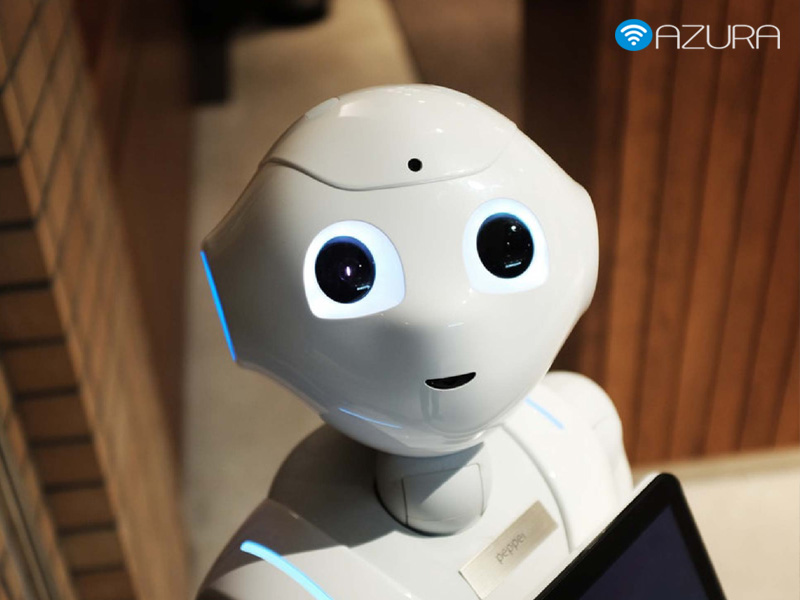Device characteristics
Connected devices are getting smaller and smaller; cheaper and more dedicated. Although connected systems are generally smarter; The actual processing power of these devices expands at the same speed – opening up a range of problems for businesses that want to join IoT, or expand their current IoT fleet.
The development of new network technologies will require a new way of processing data from many large sources, and communication between multiple systems (even in business) will soon become too complicated to be easily managed. Therefore, the telecommunications environment may be an ideal test place for artificial intelligence; with the huge amount of data that AI can use.
By building on these two technologies; Can create self-learning IoT devices (Hub Azura). With real-time access to such a huge data warehouse; The AI can then be applied to any critical environment in the mission; with confidence that it has been tested in a controlled environment.

Smart connection
AI has been used by telecommunications companies to help ensure traffic and maintain infrastructure – AT&T; analyzing unmanned aerial shots by using AI to help predict (and prevent) when towers need to be repaired, but so far AI has not been used to improve communication between machines. The connected modules or sensors themselves are not smart enough to handle AI programs, but advances in edge calculations mean ports between devices, and the cloud is getting smarter and smaller.
Equipping an edge port with the AI will then provide access to an almost unlimited amount of metadata; such as device behavior and identification; Allow some of the most time-consuming interactions to be automated. Processes such as network selection; detection of inactivation and spread spectrum (in LPWAN technologies) can benefit from Machine Learning techniques; The only problem is how much data is available locally that AI can learn.

Use smart
Therefore; the MVNO (Mobile Virtual Network Operators) is in a privileged position; with complex network infrastructure to manage; No proprietary infrastructure and history choose the best data path for their customers. There are many different network switching techniques, and some newer technologies will give AI something to immerse into it.
Multi-network SIM is being used worldwide, But businesses began to pay attention to more advanced network conversion methods to suit their needs. Connection, Multi-IMSI (International Mobile Subscriber Identification) allows SIM to access completely different network infrastructure, so data cannot be transferred to a single point of error and SIM can be connected immediately even if the cup is at the top operator level.
Technology key
Multi-IMSI technology can also be programmed on a slot of each standard. The eUICC SIM has a separate SIM configuration and can be returned to ‘bootstrap configuration; needed to add network over the network (OTA). With bootstrap multi IMSI; Users who have configured fail failover; not tied to an operator – especially important for embedded eUICC SIMs must be provided at the production site; regardless of where the device will be used.
Maximum resilience is ideal for critical applications; remote and roaming, But other applications need more flexibility. Suffix Hybrid Chipset; published at the end of 2017; connecting LPWAN technology; NB-IoT and LTE-M. This means that a device can transmit basic information on ultra-narrow band Sigfox; switch to mobile networks to send larger data packets; Such devices are synthesized by a smart edge gate. Identifying these packets and allocating them to the appropriate network band can be a great test for AI; And can show us what a real smart network might look like.
Understanding AI
The AI has not yet reached a level where we can safely use it to help us in sensitive situations; as a patient diagnosis; transfer to a court or drive us. But this does not mean that the AI is incapable; conversely, by imitating the neural network in the human brain; Deep learning techniques can make decisions independently; The problem is if we use unsupervised deep learning; We do not know how these programs achieve their decisions.
Due to the tightly structured telecommunications environment (even if these structures are extremely complex) and every piece of data behavior is measured and available to operators or MVNOs, they can use supervised machine learning techniques to improve network and turn to deep learning when ready.
Ability to self-study new technology
We can hope that AI will follow the same trend as IoT technology, become more available, cheaper and smarter when more people accept it, meaning a self-learning network can feasible – and the AI may soon be able to work with more important applications.
Will this alleviate people’s fears of AI taking over the world, but when the business environment becomes more competitive, as technology falls in price and billions of new devices are connected to IoT ecosystem; We will need something to help us understand the meaning of everything.








